Recent Fire Damage Posts
Shield Your Orange County Home from Smoke Damage Amid Wildfires
9/23/2024 (Permalink)
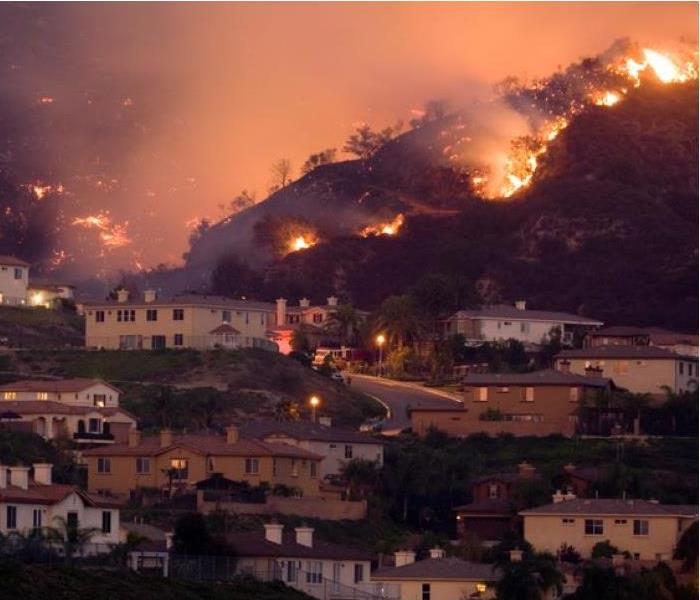 Wildfires near residential areas can lead to severe smoke damage. Rely on SERVPRO of Diamond Bar / S Pomona for expert fire & smoke restoration.
Wildfires near residential areas can lead to severe smoke damage. Rely on SERVPRO of Diamond Bar / S Pomona for expert fire & smoke restoration.
With wildfires on the rise across California, homes that aren't directly threatened by fire can still experience severe smoke damage. Smoke particles can easily find their way inside, leaving behind persistent odors, ash, and harmful residues. To protect your property, it's crucial to act swiftly and employ professional services. At SERVPRO of Diamond Bar / S Pomona, we specialize in fire restoration, odor elimination, and expert cleaning to help protect your home.
Begin by sealing off windows, doors, and vents to prevent smoke from entering. Utilizing air purifiers equipped with HEPA filters can also help reduce airborne contaminants. However, if smoke does infiltrate your home, contact SERVPRO of Diamond Bar / S Pomona immediately. Our skilled team will manage every detail of the smoke damage restoration process, ensuring your home is thoroughly cleaned and deodorized.
If evacuation is necessary, you can trust us to protect your valuables. We offer pack-out and secure storage services to keep your belongings safe from smoke exposure.
Smoke damage can severely impact your home's air quality and surfaces over time, but with professional intervention, these issues can be quickly resolved. Contact SERVPRO of Diamond Bar / S Pomona for complete fire restoration services and peace of mind.
California Fire & Fire Mitigation
8/14/2023 (Permalink)
Tis the season - California wildfire season is upon us. What is Fire Mitigation? Wildfire mitigation is an action taken before a wildfire ignites to reduce its severity and negative impacts such as the destruction of homes. Forest management, prescribed fire, home hardening, and defensible space are common wildfire mitigation strategies. Even though you take every precautionary measures to protect your home from the flames, smoke can be a huge problem. At SERVPRO, we are experts at Restoring your home or business after fire damage to its pre-fire condition is our main goal. As a leading fire damage restoration company, we specialize in fire damage cleanup and fire damage restoration, smoke damage cleanup, and removal of smoke odors. Our team will deep clean and remove soot from walls, carpets, and upholstery.
How To React to a Gas Leak
6/22/2021 (Permalink)
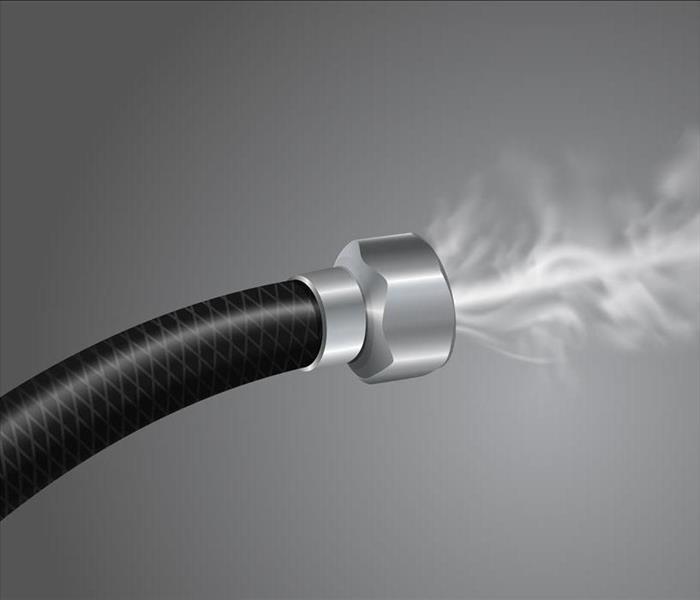 A gas leak can quickly turn into a gas fire or explosion.
A gas leak can quickly turn into a gas fire or explosion.
While gas delivery systems are very safe, the pipes can still deteriorate and leak with age. A gas leak can quickly turn into a gas fire or explosion. These can quickly burn through your home and cause a lot of damage. If you want to avoid this unpleasant situation, you need to know the signs of a leak and what to do in this emergency.
What To Do if You Smell Gas
The best way to avoid a gas fire is to react quickly to a leak. Typically, you will identify a leak by smelling sulfur or rotten eggs. If you smell gas, you need to do the following:
- Leave the area and get to safety
- Call the utility provider and let them know about the leak
- Call 911 to notify fire officials
- Help others evacuate and stay clear of the area until it is proven safe
- Call a fire remediation company to help remove the smell and any potential damage from your home in Cal Poly University-Pomona, CA.
Other Ways To Identify Gas
Most people identify natural gas by its smell. While the gas itself is odorless, a sulfur-based odorant is added to give it the associated rotten egg smell so it can easily be identified. However, this is not the only way to identify this substance. If you are outdoors, you can often see it. Any gas escaping from an underground pipeline will be recognizable by the discolored soil and dead vegetation around the line. You can also identify a potential gas fire threat in your home by listening. If you hear a high-pitched whistle or hissing noise, there is a chance that this is caused by escaping gas from your pipes.
If you want to avoid a gas explosion or fire, you must react appropriately. Knowing the signs of a leak and what to do in this event can help you avoid devastation.
"Raising" the Roof
4/12/2021 (Permalink)
 We are trained professionals, so never hesitate to give us a call if a disaster like this happens.
We are trained professionals, so never hesitate to give us a call if a disaster like this happens.
When a fire occurs to your home or business in Pomona, CA, it can be very scary and the damage can be tremendous. When you dial 9-1-1 and the fire department arrives, they are going to try to put the fire out as fast as possible and make sure that it does not spread. During this process, they may have to cut a hole in your roof to release the smoke. Although this may not seem ideal because it leaves a giant, gaping hole in your house, it is a safe choice.
No worries though! SERVPRO has got your back! We can take care of all that. From fixing the roof to cleaning your furniture that smells like smoke we can do it! We are trained fire cleanup professionals, so never hesitate to give us a call if a disaster like this happens.
Give our SERVPRO of Diamond Bar/South Pomona team a call today - (909) 860-1748!
The 3 Steps of Content Cleaning
3/31/2021 (Permalink)
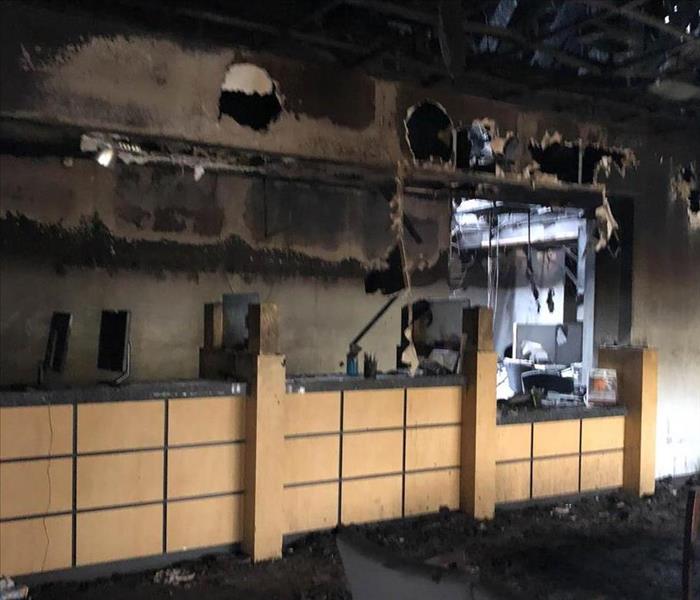 When a fire strikes your home or business in Pomona, CA, you want to get back to normal as quickly as possible.
When a fire strikes your home or business in Pomona, CA, you want to get back to normal as quickly as possible.
Fires can be one of the worst disasters for a homeowner. After the smoke clears, you want your life to get back to normal. This means you want all of your belongings, even your porous dry-cleaning, to be smoke-free. You also want your precious documents to be restored. The good news is that cleaning services are available to restore almost any items.
1. Pack Out
After the fire, all of your items from your carpets to your dry-cleaning will be assessed. Any items that the processionals can salvage through a process called content cleaning will be noted. The fire restoration professionals will photograph, inventory, and pack up all of these salvageable items. The boxes containing your items will be labeled and made easily trackable. Then, they will be transported to a cleaning facility, where they will be placed into storage until it is time for them to be restored. After storage, they will be removed and sent to the cleaning areas.
2. Cleaning
The cleaning process starts when the professionals sort through your items to determine the best methods. They will start by sorting your hard and soft items, putting your picture frames in one pile and your dry-cleaning in another. Then, the cleaners will further sort the items to determine if they can wash them with automated machines or if they need to be hand-scrubbed. Once this is finished, the professionals will use the appropriate cleaning method to restore your items.
3. Move-In
After the cleaning process, the professionals will move your items to storage. Once you are ready to return to your home, you can have your items delivered and begin moving back in. Your items will appear and smell just like they did before the fire, bringing you one step closer to normalcy.
When a fire strikes your home or business in Pomona, CA, you want to get back to normal. The good news is that content storage and cleaning services can help you achieve this goal. They can help return your items to their previous state after fire damage. Then, they can store them until you are ready to move back to your home.
Answers to Common Questions About Smoke Alarms
3/18/2021 (Permalink)
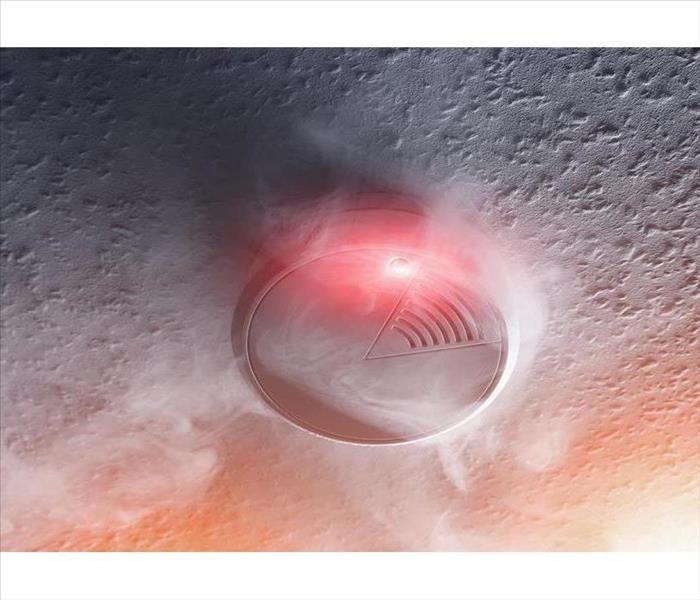 You should keep one smoke alarm in every bedroom and on each floor of your Diamond Bar, CA, home.
You should keep one smoke alarm in every bedroom and on each floor of your Diamond Bar, CA, home.
Common Questions About Smoke Detectors
Smoke detectors are invaluable parts of any household. According to the National Fire Protection Association, 60 percent of home fire deaths occur in properties without a working smoke alarm. Here are answers to common questions about smoke detectors.
1. How Many Detectors Do You Need?
Fires can be particularly dangerous at night when everyone in the home is asleep. To make sure each member of the household hears the alarm, one should be placed inside every bedroom and outside of every sleeping area. At least one smoke detector should also be put on each level of your home, including the attic and basement. You may want to install additional detectors if your house is particularly large.
2. How Often Should You Test and Replace the Alarm?
Malfunctioning smoke detectors are essentially useless. You should thus test every smoke alarm at least once a month. Just push the test button on the detector and make sure the device beeps.
Most smoke detectors last approximately 10 years. Check the manufacturer date on the back of each alarm to find out when you need to replace it.
3. What Do You Do When the Alarm Sounds?
If you hear the detector beeping, get out of the house as soon as possible. Everyone in your family should get to a safe meeting place outside the premises. Once you are there, use your cell or a neighbor's phone to dial 911. You may also want to contact fire cleanup specialists who can restore your home and remove any lingering odors.
Ideally, you should keep one smoke alarm in every bedroom and on each floor of your Diamond Bar, CA, home. Each of these detectors should be tested regularly to ensure they are functioning properly. The alarms should be completely replaced every 10 years. This should keep your family safe and prevent severe fire damage to your property.
The Features of a Fire Escape Plan for a Business
3/18/2021 (Permalink)
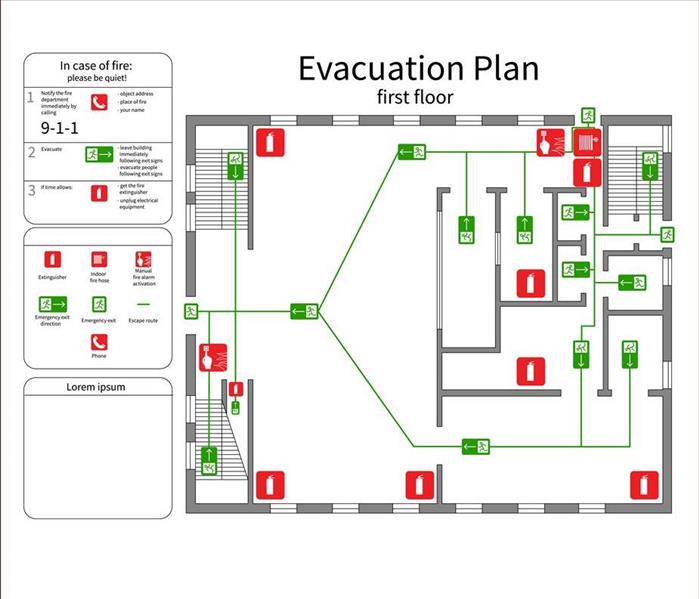 It is prudent to put together a fire escape plan.
It is prudent to put together a fire escape plan.
Most people or businesses do not expect a fire to happen, but everyday fires break out in all kinds of companies. It is prudent to put together a fire escape plan. This will protect the lives of your employees and customers and it could also limit damages. The Red Cross puts out many resources to help people cope during an emergency. The organization offers the following advice immediately after a fire strikes:
- Give first aid where needed such as putting cold water on minor burns; call for emergency help for larger issues
- Let friends, family and coworkers know you are safe
- Help people and animals that need special assistance due to age or disability
- Stay away from damaged buildings
The Basics of a Fire Escape Plan
An emergency escape plan consists of two major components: know where to go and know what to do. Company leaders should make sure everyone knows where to head in the case of a fire. This will likely be a meeting place outside your building in Cal Poly University-Pomona, CA. Leaders should also map out the safest route. A plan also includes a number of smart actions to take. If there is time, someone should call the fire department as soon as possible, or activate an alarm. Yelling fire could alert people who are yet unaware of the fire. People should leave personal items behind, use stairs instead of elevators and stay away from doors that have handles hot to the touch. If you must go through smoke, stay low and close doors behind you.
The Procedures After a Fire
Once the fire escape plan has proven successful, a fire damage mitigation team should be called in immediately. Highly-trained technicians will inspect the property, assess the damage and map out a recovery plan. This will include removing soot and smoke damage and eliminating odors. The ultimate goal is to return the building "Like it never even happened."
How to Use a Fire Extinguisher During a Fire
3/18/2021 (Permalink)
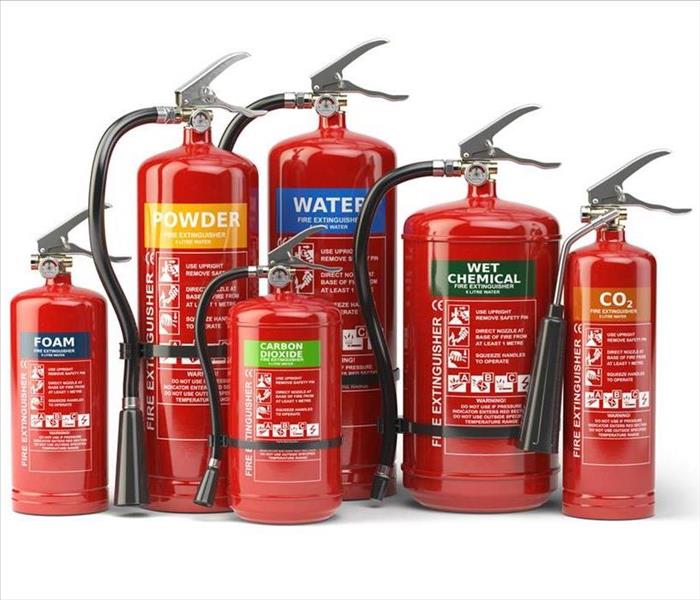 There are different types of fire extinguishers.
There are different types of fire extinguishers.
Knowing how to use a fire extinguisher correctly can be the difference between life or death during a home fire. When used properly and promptly, they can stop a fire dead in its tracks, giving the fire department time to arrive.
But there is a technique to do it right. It’s called P.A.S.S., and it’s what the experts recommend for putting out fires.
4 Types of Extinguishers
Each fire extinguisher will be labeled with a specific class:
Class A, for solid combustible fires.
Class B, for flammable liquid fires.
Class C, for electrical fires.
Class K, for kitchen fires.
Most residential fire extinguishers will be a combination: ABC. This is an excellent all-around extinguisher that covers all the bases. Using a single-class type is ok if you’re experienced with it, but you’ll be fine with an ABC in most homes – or even better, two of them.
Safety First!
Before you consider using an extinguisher on a fire, you need to make sure you’re safe. If there’s even the slightest doubt of your safety while fighting the fire, leave immediately and let the professionals handle it. An event called a flashover can happen in seconds, and if you’re inside when it does, you’re not likely to survive. If the flames are even slightly brushing the roof, get out!
Once everyone is safe, call the fire department. Then you can consider fighting the fire yourself if it’s isolated and the smoke isn’t dangerous.
P.A.S.S the Test
P.A.S.S stands for pull, aim, squeeze and sweep. Grab the fire extinguisher and pull the safety pin. Aim the nozzle at the base of the fire. Squeeze the handle gently at first until you have a sense of the flow - -then give it a full blast. Sweep the stream from side to side.
Done right, you can save your home a great deal of fire damage. However, safety should always be in your mind; if the fire is growing, go ahead and leave it. Once the fire is out, call a top fire cleanup company in your area to get the restoration process started immediately.
How to Prevent House Fires
5/14/2020 (Permalink)
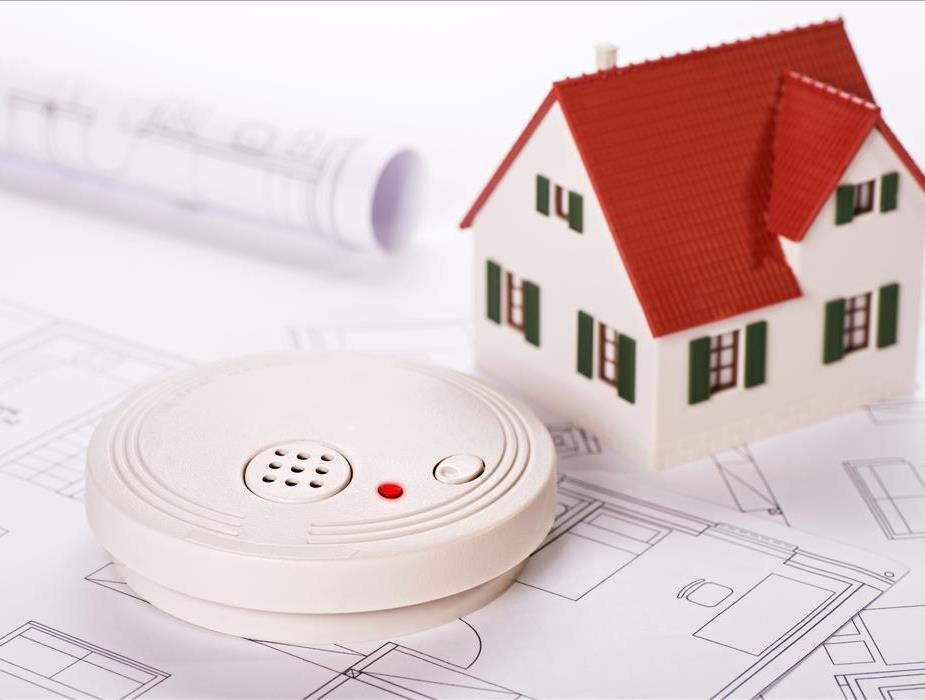 Safeguarding your home against fires
Safeguarding your home against fires
It’s always better to be safe than sorry... thus better to be extra vigilant when it comes to keeping your home safe from both smoke and fire. Check out these useful tips on how to prevent house fires. Cord Maintenance A frayed or damaged cord is a common source of house fires. Best to do a regular visual inspection of cords and wires. If you are unsure it is best to have them checked by a professional to prevent house fires. Be Wary When it comes to Storing Flammable Items Hairspray, insecticides, rubbing alcohol, and other flammable products should be safely secured. Keep them well away from heat sources as much as possible. Avoid Leaving your Kitchen While Using Your Cooking Appliances It will only take a few seconds for a fire to happen so you need to be careful when cooking food. Never leave said appliances unattended. If you do need to leave the kitchen, just turn off the appliances used for cooking. Invest in a Fire/Smoke Alarm and a Fire Extinguisher Fire & smoke alarms are great tools to alert you and your family when a fire occurs. A fire extinguisher will help to mitigate or control small fires. Make sure to test out the alarms and replace the batteries if needed. Your fire extinguisher should always be within reach... and certified to be in proper functional condition. Need Emergency Service? Call Us 24/7 – (714) 361-0572
FASTER TO ANY SIZE DISASTER
SERVPRO of Diamond Bar South Ponoma is locally owned and operated, so we’re already close by and ready to respond immediately when you need us. We’re also part of a national network of over 1,700 Franchises, which gives us access to more resources for larger cleaning or restoration projects or major storm scenarios.
 Wildfires near residential areas can lead to severe smoke damage. Rely on SERVPRO of Diamond Bar / S Pomona for expert fire & smoke restoration.
Wildfires near residential areas can lead to severe smoke damage. Rely on SERVPRO of Diamond Bar / S Pomona for expert fire & smoke restoration.





 24/7 Emergency Service
24/7 Emergency Service







